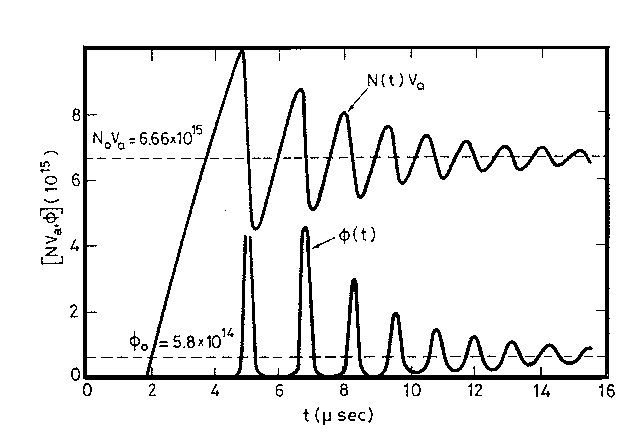Section 2.3: Ultra-short Pulsed Lasers (1)
Human beings are really clever in making use of different kinds and forms of energy. Laser material processing relies on laser systems of desired properties. An inspiring thing in laser processing is the application of ultra-short pulsed lasers. We know that laser energy is very intense, normally when we use lasers to machine the material, the material experience phase transitions, from solid state to liquid state then to gaseous state. If the laser beam is of sufficiently high energy, materials can be ablated, i.e., change to gas sate directly from solid state. The accompanying high temperature generates Heat Affected Zone (HAZ), which is the source of many undesired machining properties, such as poor surface finish, internal remaining stress, etc. This problem becomes even more serious for high-energy conditions. If we can use high-energy laser beam pulses, we may reduce the negative effects of heat affected zone by reducing the interacting time. An ideal condition is that only the material to be removed absorbs the incident high intensity laser energy, the other parts experience little influence.
This ideal condition is almost reached by ultra-short pulsed lasers. M. D. Shirk et al gave a review of this area. The Ti:sapphire laser (735nm-1035nm) and excimer-dye laser (220nm-300nm, 380nm-760nm), with the help of chirped pulsed amplification (CPA) and pulse compressor techniques, can offer pulse width in the femtosecond (10-15 second) range and pulse energy up to 125 mJ and 15 mJ respectively, the maximum focused intensities are currently around 1019 W/cm2. Potential applications in manufacturing of these lasers are laser micromachining and laser material ablation. It has been observed that ultra-short high energy laser pulses offer many advantages. These include: precise ablation of materials without significant heat affected zone, ablation of very wide range of materials (metals, polymers, ceramics, highly reflective materials, etc.), little plasma absorption effects thus improved ablation efficiency, little redeposition, etc. Theory for explaining the fundamental phenomena is not mature, but many experiments have been and are being carried out.
The laser system for generating ultra-short pulses is relatively complex, it is a challenge to you if you want to know the mechanisms behind it. Letís move on step by step, we will succeed!
Step one: Know some transient properties of lasers
We know that when the threshold population inversion is reached, lasers can be generated. Letís first have a general physical vision of this transient process, as shown in the figure below.

Figure 2.22: Laser transient property (Orazio Svelto,1998)
First the active medium are pumped to build up population inversion, in the mean time atoms at excited state can change back to normal state by relaxation, spontaneous emission and stimulated emission, photons mainly come from the stimulated emission. Before the threshold population inversion is reached, there is only a very small number of oscillating photons in the cavity, because once they are generated they are soon attenuated. When the threshold population inversion is reached and grows up, oscillating photons start building up, until they reach the steady state value. Then the stimulated emission becomes dominant over pumping, the population inversion decreases. The photon number reaches the maximum value when the population inversion decreases to the critical value. This decrease continues, it becomes so low that the photon number decreases soon. When the photon number decreases to a certain value, the pumping process becomes dominant again, the population inversion starts increasing again, when it reaches the critical value, the photon number starts building up, a new cycle begins. So it is the balance between the pumping process and stimulated emission etc. that decide the transient properties. Note that if pumping is constant, the cavity property is constant, the oscillating magnitudes of both population inversion and photon numbers are decreasing to the steady state value. Recall photon number is proportional to the intensity of the laser output light, we know the transient property of laser output light is similar to the photon curve in the figure.
Step two: Letís generate the laser pulses
Through the above discussion we can expect some methods being able to generate laser pulses. One idea in your mind might be that if the pumping is stopped for a certain period of time after the population inversion reaches a value above threshold, the photon pulse duration time will be much short because of the stop of pumping. This is indeed a feasible way of making laser pulses which is called Gain Switching, i.e., use strong pump rate pulses to generate laser output pulses. Given a sufficiently rapid and intense pump rate, any laser can in principle be gain switched in this way. Pulses shorter than 1 ns has been obtained by short-cavity dye lasers.